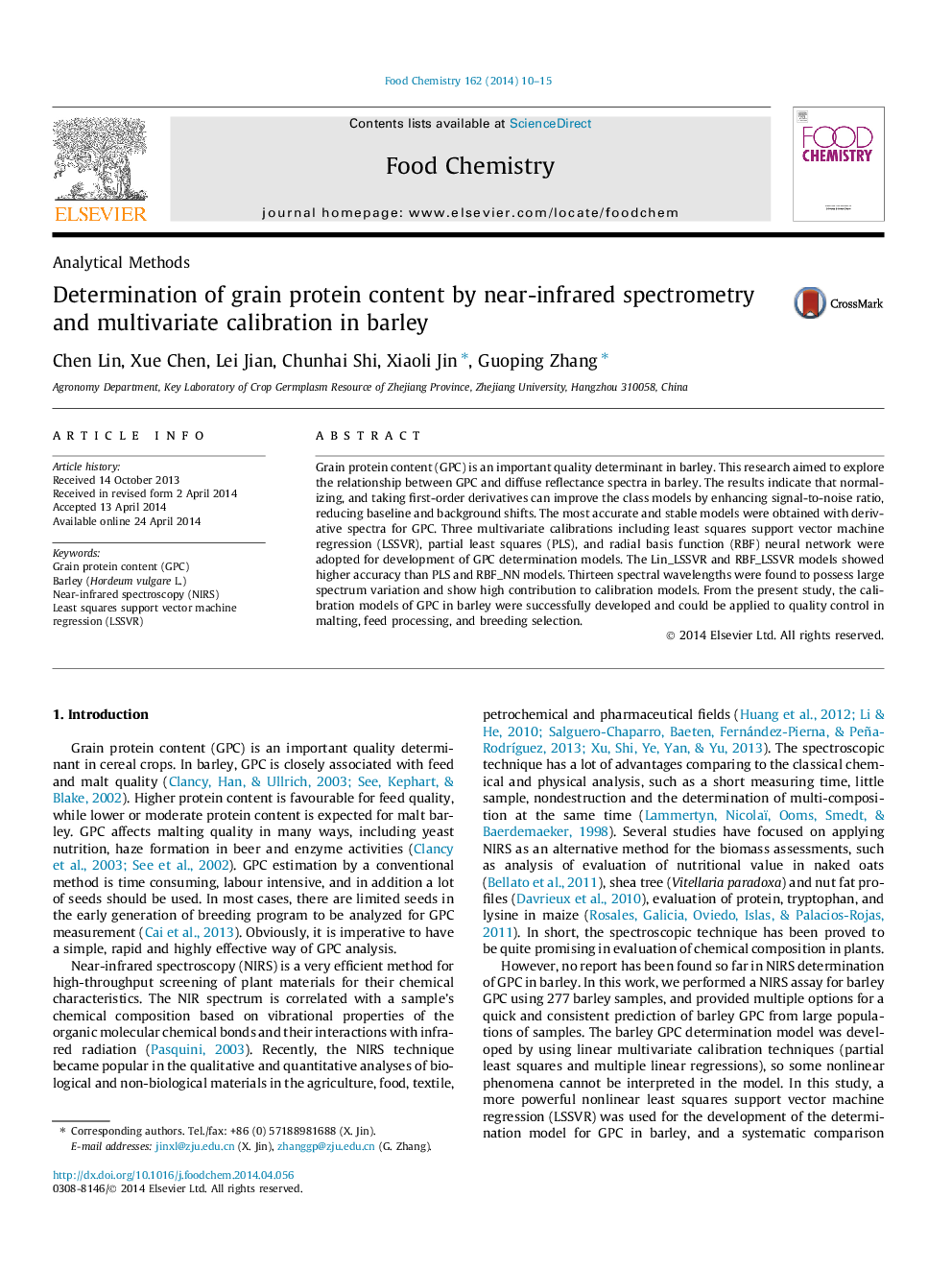| Article ID | Journal | Published Year | Pages | File Type |
|---|---|---|---|---|
| 1183873 | Food Chemistry | 2014 | 6 Pages |
•The pre-treatments of NIRS data improved the regression models.•Lin_LSSVR and RBF_LSSVR model outperform PLS and RBF_NN model for barley GPC.•NIR spectra showed good performance in the determination of GPC.•Thirteen spectral wavelengths showed high contribution to calibration models.
Grain protein content (GPC) is an important quality determinant in barley. This research aimed to explore the relationship between GPC and diffuse reflectance spectra in barley. The results indicate that normalizing, and taking first-order derivatives can improve the class models by enhancing signal-to-noise ratio, reducing baseline and background shifts. The most accurate and stable models were obtained with derivative spectra for GPC. Three multivariate calibrations including least squares support vector machine regression (LSSVR), partial least squares (PLS), and radial basis function (RBF) neural network were adopted for development of GPC determination models. The Lin_LSSVR and RBF_LSSVR models showed higher accuracy than PLS and RBF_NN models. Thirteen spectral wavelengths were found to possess large spectrum variation and show high contribution to calibration models. From the present study, the calibration models of GPC in barley were successfully developed and could be applied to quality control in malting, feed processing, and breeding selection.
